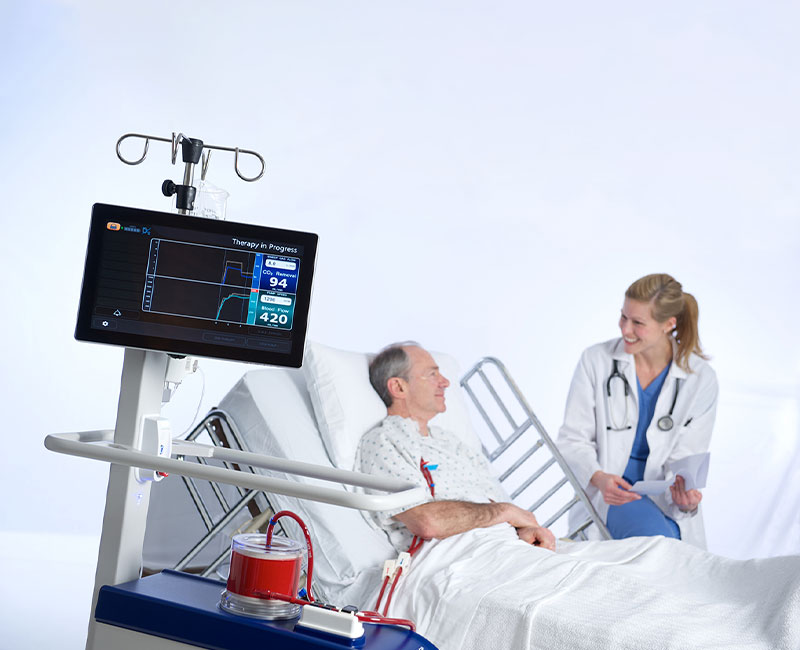ECCO2R
ECCO2R
Extracorporeal CO2 removal (ECCO2R) is a rapidly evolving technology that has emerged as a promising alternative to traditional treatments for refractory hypercapnia in acute respiratory failure. The use of non-invasive ventilation (NIV) and extracorporeal membrane oxygenation (ECMO) has long been the standard approach to treating these conditions, but ECCO2R offers several advantages over these methods.
One of the key benefits of ECCO2R is its less invasive and less complex nature when compared to ECMO. While ECMO requires higher blood flow rates and larger cannula access, ECCO2R utilizes significantly lower blood flow rates and smaller access cannula. This means that ECCO2R can be performed with less associated trauma to the patient’s vascular system, leading to decreased risk of complications and faster recovery times.
Furthermore, ECCO2R provides targeted CO2 removal without the need for full bypass support, allowing for more precise control of blood gas levels. This makes it an ideal intervention for patients who do not require full mechanical ventilation but still require help with CO2 elimination. In contrast, NIV only provides limited support for CO2 clearance and is often ineffective in cases of severe respiratory failure.
Another benefit of ECCO2R is its ability to reduce the need for sedation and paralysis, which is often required in patients undergoing ECMO. This allows for greater mobility and comfort for patients, leading to earlier mobilization and rehabilitation.
Additionally, ECCO2R provides a cost-effective alternative to ECMO, which can be prohibitively expensive for many healthcare systems. By utilizing fewer resources and requiring less staff involvement, ECCO2R can provide significant savings while still delivering effective treatment outcomes.
Despite its advantages, there are some limitations to the use of ECCO2R. It does not provide the same level of oxygenation support as ECMO, and may not be suitable for patients with severe hypoxemic respiratory failure. However, ECCO2R can be used as an adjunct to ECMO in these cases, providing targeted CO2 removal while allowing for lower levels of ECMO support.
In conclusion, ECCO2R represents a promising alternative to traditional treatments for refractory hypercapnia in acute respiratory failure. Its less invasive and less complex nature, targeted CO2 removal, and cost-effectiveness make it an attractive option for healthcare providers. While it may not be suitable for all patients, ECCO2R offers a valuable addition to the armamentarium of interventions available for these challenging conditions.
